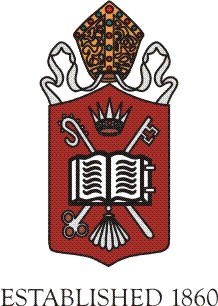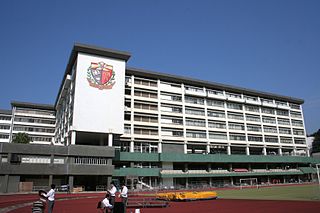
Cheung Chau is an outlying island of Hong Kong, located 10 km (6.2 mi) southwest of Hong Kong Island. It is also called Dumbbell Island due to its dumbbell-like shape. It has been inhabited for longer than most other places in Hong Kong, and had a population of 22,740 as of 2011. Administratively, it is part of the Islands District.

Lantau Island is the largest island in Hong Kong, located west of Hong Kong Island and the Kowloon Peninsula, and is part of the New Territories. Administratively, most of Lantau Island is part of the Islands District of Hong Kong. A small northeastern portion of the island is located in the Tsuen Wan District.

Leslie Cheung Kwok-wing, born Cheung Fat-chung, was a Hong Kong singer and actor. One of the most influential cultural icons in the Chinese world, Cheung was known for his debonair demeanor, flamboyant screen characters, and avant-garde, androgynous stage presence. Throughout his 26-year career, he released over 40 music albums and acted in 56 films.

Sham Shui Po is an area of Kowloon, Hong Kong, situated in the northwestern part of the Kowloon Peninsula, north of Tai Kok Tsui, east of Cheung Sha Wan and south of Shek Kip Mei (石硤尾). It is located in and is the namesake of the Sham Shui Po District.

Priscilla Chan Wai Han is a Hong Kong singer. She is renowned for her contralto singing voice and her maturely clear, technically skilled, and emotion-rich vocals.

Queen's College is the first public secondary school founded in Hong Kong by the British colonial government. It was initially named The Government Central School in 1862 and later renamed Victoria College in 1890, and finally obtained the present name of Queen's College in 1894. It is currently located in Causeway Bay.

St Stephen's College (Chinese:聖士提反書院) is a Christian Direct Subsidy Scheme co-educational secondary school in Stanley, Hong Kong. With an area of about 150,000 m2, the college is the largest secondary school in Hong Kong, and is one of the very few boarding schools in the territory. Many buildings in the campus are listed in the list of historic Buildings and Declared Monuments by the Antiquities Advisory Board. When the college was founded in 1903, there were only six boarders and one day student; in the academic year 2014–2015, there were approximately 910 students studying in the college. The current principal is Mrs Julie Ma, commencing duty since 2023. St Stephen's College uses English as the medium of instruction except for Chinese-based subjects. St Stephen's College is the first school in the territory having its own Heritage Trail in the school campus. The college's oldest building, the School House, was declared a monument in 2011, being one of the few schools in Hong Kong to own a Declared Monument in its campus.

Diocesan Girls' School is one of the oldest girls' schools in Hong Kong, operated by the Anglican Hong Kong Sheng Kung Hui (香港聖公會) to provide a well-rounded secondary education for girls.

La Salle College is a boys' secondary school located in Kowloon City District, Hong Kong. It was established in 1932 by the Institute of the Brothers of the Christian Schools, a Catholic religious teaching order founded by St John Baptist de La Salle. Regarded as one of Hong Kong's more prestigious institutions, the school often produces top-scorers in public examinations. The school uses English as the medium of instruction.

Braemar Hill is a hill with a height of 200 metres (660 ft) south of Braemar Point on Hong Kong Island, Hong Kong. The hill was likely named after the Scottish village of Braemar by British officials.

Queen Elizabeth School, or QES and QE for short, is a secondary school in Hong Kong. The school was the first English as a Medium of Instruction (EMI) (Anglo-Chinese) co-educational secondary school founded by the Government of Hong Kong. It is located on a mound at the boundary of Sai Yee Street and Prince Edward Road West in Mong Kok, Kowloon.
Chan Fai-young is a Hong Kong Cantopop composer. Chan was born in Macau in 1970. He attended Berklee College of Music, an American college in Boston, Massachusetts.

Lee Sun Chau was one of the first female Chinese doctors of Western Medicine in China.
The Wang Chau housing controversy comprises a series of events related to a housing project in Wang Chau, Yuen Long District, Hong Kong. Initiated in 2012, the housing project aims to develop 17,000 public housing units in three phases. Phase 1 refers to ongoing development of 4,000 units in a "green-belt" site; while phases 2 and 3 refer to the deferred plan to build the rest of the targeted units in the "brownfield" site. The case came under media scrutiny after activist Eddie Chu Hoi-dick raised concerns about potential collusion between the Hong Kong government, businesses and rural landlords in his election campaign.
The Great China Match Company Factory was a large-scale manufacturing facility producing matches. The factory was located on the island of Peng Chau in Hong Kong. The facility was completed towards the end of the 1930s and was at one point the largest such factory in South East Asia.

Professional Power is a political group based in Sai Kung District, Hong Kong. The group is formed and led by Christine Fong, a former member of the Liberal Party. The group markets itself as nonpartisan and currently has four members in the Sai Kung District Council.

Shelter Island, known in Cantonese as Ngau Mei Chau, is an island located in the water body Port Shelter, in the Sai Kung District, the New Territories, Hong Kong S.A.R., China.

Sam Cheung Ho-sum is a Hong Kong politician, social activist, and former member of the Tuen Mun District Council for San Hui.

Kai Yuen Street is a street in North Point, Hong Kong, that goes up Kai Yuen Hill. It is a historically rich street, once serving as the main access road to Kai Yuen, the influential Chan Wai Chow family's mansion. Kai Yuen was demolished in the late 1970s.

















